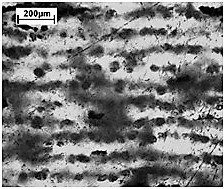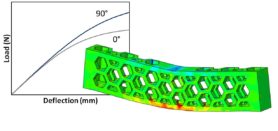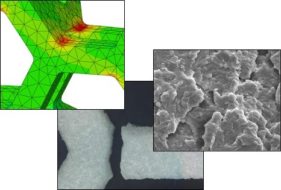
Additive manufacturing processes can introduce numerous microstructural features such as porosity, internal interfaces, or variations in crystallinity into a material that can strongly influence mechanical response and failure. Microstructural characterization is therefore critical to improving processing and understanding material properties.

 Constitutive models that accurately capture complex material behavior are a necessity for successful finite element analysis (FEA) of additively manufactured parts.
Constitutive models that accurately capture complex material behavior are a necessity for successful finite element analysis (FEA) of additively manufactured parts.


